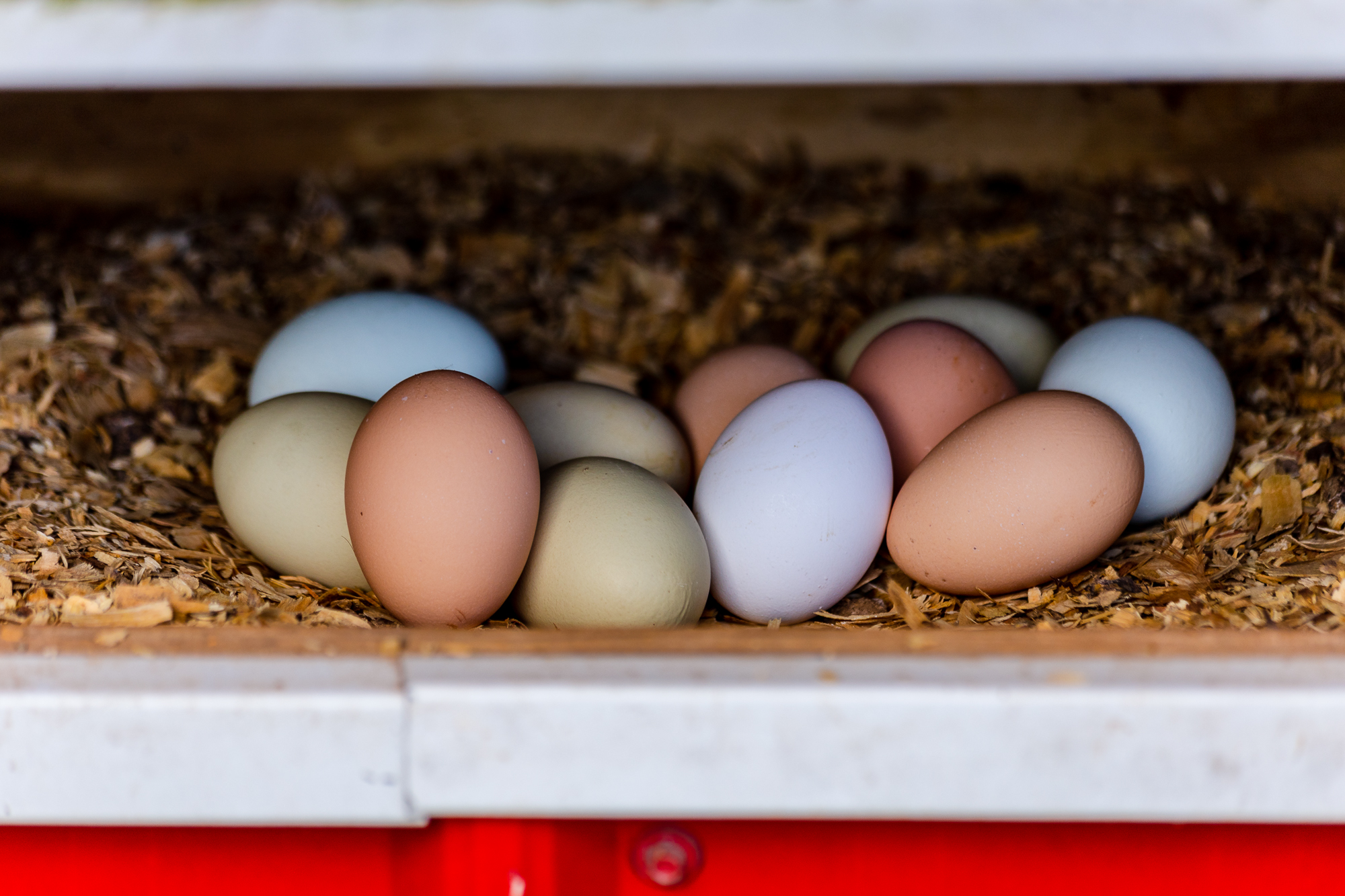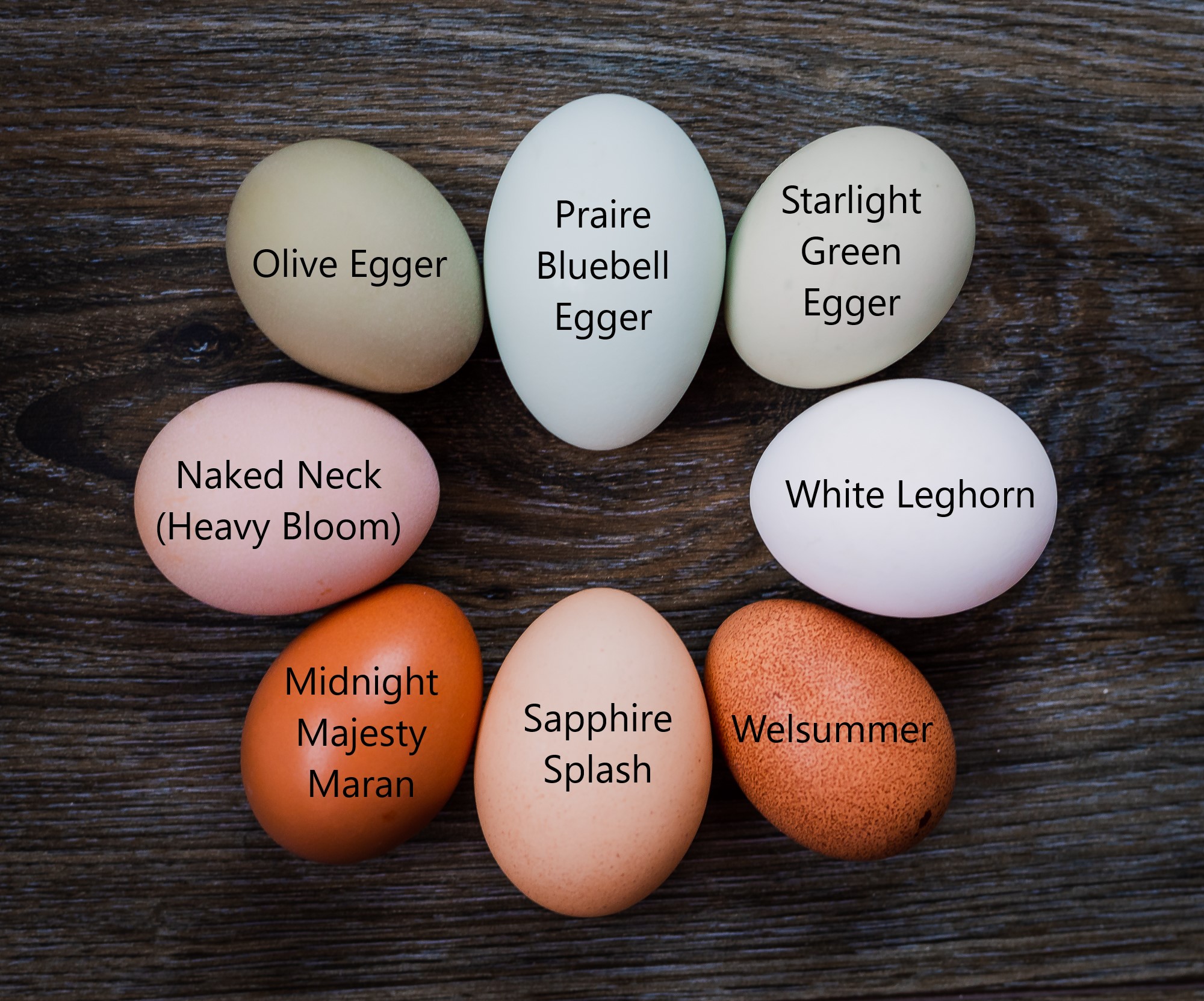If you’re deciding on new chickens and what new breeds to add to your flock, egg color is probably one of your top considerations. Long gone are the days of plain white eggs.
How did colored eggs come about?
Eggs from the very first chickens of the wild started out as tan, or light brown. Wild jungle fowl were domesticated around 2000 BC. All our domesticated breeds stem from these wild fowl.
All eggs start out INSIDE the hen as white. Through simple genetic tweaks, eggs now can come in white, tan, dark brown, speckled, blue, green, olive, and every color in between! Without getting too deep into the eggshell rabbit hole of genetics, allow me to explain how eggs get their colors!
(Remember, egg shell color does not affect the yolk or egg white. A more nutritious egg will have a deeper yellow yolk. Diet directly affects the quality of egg.)
Blue Eggs
Try this experiment: crack a blue egg. You will see the inside of the shell is blue. A light, robin’s egg blue. Crack open a green egg, and it will also be blue on the inside. That’s because green eggs start out as blue. The base color of most blue and green eggs is actually light blue, which stems from white eggs.
The compound responsible for blue eggs is called oocyanin. Oocyanin penetrates through the entire eggshell, making it blue all the way through the shell. Oocyanin makes its appearance early in the egg forming stage, that is why a blue or green shelled egg is always blue throughout the shell. Blue eggers first originated in South America about 400 years ago with the true Araucanian breed.

Dark Eggs
Dark eggs are achieved through a slightly different process. Pigments attach to the eggshell at the final stage of laying. These are proteins are called porphyrins. Porphyrins are only deposited on the exterior of the shell. It is one of the last processes to occur right before the egg is laid. You’ll notice the inside of a dark eggshell is white, the base color. When a chicken has more of these proteins present, they are deposited on the shell, making it appear brown or heavily speckled. Dark eggs have a high likelihood of having meat spots inside the egg. These are harmless, and only an eyesore. There seems to be a correlation between the extra proteins being deposited on the eggshell as well as occasionally inside the egg.
Dark eggs have become more and more popular over the years. I must admit, I love them too! These chickens aren’t necessarily any more special than other breeds, they simply have more porphyrins.
Green Eggs
Much like dog breeding, different colored eggs or characteristics can be achieved by careful mixing of breeds. Green egg layers have two different parents. One must be from blue laying stock, while the other must be from brown laying stock. Dust some dark porphyrins onto an already blue egg containing oocyanin, and you get a green looking egg! Isn’t it amazing!
The olive egger comes from even more complicated breeding. Mix green laying stock with dark brown laying stock. Much like combining paint colors, mixing different stock results in the chance of a hybrid color. . Mix brown with green, you get a brownish green, or a more illustrative term, olive!
Pink/Purple Eggs
All eggs are covered in a protective membrane called a “bloom.” The “bloom” keeps bacteria from entering the porous eggshell. Some lucky individual birds lay a heavy bloom, meaning a thicker layer of membrane. This creates a mild white mask over the eggshell. If you have a dark layer who also lays a heavy bloom, her eggs come out looking purple. The bloom washes off under water, revealing the eggshell color underneath.
Nothing is more rewarding than seeing a basket full of kaleidoscope eggs sitting on the counter. I hope you’ll try to add a few of these to your flock! Fall is the perfect time to order chicks that will be ready to lay in Spring.

Here’s a list of breeds you should try to get colored eggs at home!
Blue
Araucana
Americana
Easter Eggers
Prairie Bluebell Egger
Green
Starlight Green Egger
Olive Egger
Americana
Darkest Brown
Maran
Wellsummer